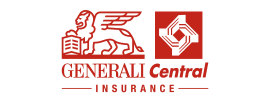Top 21 Changes in Life, Motor, And Health Insurance Policies You Must Know in 2021
National Insurance Awareness Day 2021: Since last year, the Insurance Regulatory and Development Authority of India (IRDAI) has introduced several policies, as well as made changes to a few, mainly in order to cope with the COVID-19 pandemic situation. The main objectives of the changes are: to provide the policyholder the desired coverage, to design insurance plans as per the requirement of customers, and to increase insurance penetration in India.
Changes in Life Insurance Segment
Here are the changes made in the life insurance segment over a year:
1. Launch of Saral Jeevan Bima: With an objective to provide the required coverage at affordable premiums, the insurance regulator launched a standard term plan named Saral Jeevan Bima, under the domain of life insurance. The plan offers the assured individual cover of up to Rs. 25 Lakh. Standard life insurance plans like this are designed to broadly meet the requirements of people without differentiating them on the basis of their occupation, gender, or occupation.
2. Issuing Policy Through E-KYC: During the pandemic, a feature of e-KYC, video KYC was introduced so that digital signatures and online verifications could be done with ease.
3. Claims Due to COVID-19: Insurance companies were asked to honor death claims arising due to COVID-19 so as to offer financial support to the policyholders.
Changes in Health Insurance Insurance Segment
Here are the changes made in the health insurance segment over a year:
1. Arogya Sanjeevani Policy Launched: Launched on 1st April 2020, Arogya Sanjeevani Policy is a standard indemnity-based insurance offered by all insurance companies offering health insurance plans, to simplify health insurance. It is an affordable policy that offers cover to the entire family for sum insured options ranging between Rs. 1 Lakh and Rs. 5 Lakh. The policy also offers cover for claims arising due to COVID-19 treatment.
2. Corona Kavach Policy Launched: Corona Kavach Policy was also launched to cope up with the pandemic situation. The policy covers individuals for expenses arising due to treatment and hospitalisation due to COVID-19. Another similar plan is the Corona Rakshak Plan. Corona Kavach provides cover on an indemnity basis, whereas Corona Rakshak Plan offers cover on a fixed benefit basis. Both are short term-plans and do not offer lifetime renewability benefits.
3. Introduction of EMI options: Considering the pandemic situation, for the first time ever, the policy buyers were allowed to pay premiums on monthly, quarterly, and half-yearly instalments. The step was taken so as to reduce the financial stress of the policy buyers.
4. Transparency in Policy Terms And Conditions: The insurance regulator has asked the insurance companies to declare the diseases that it will not cover, for up to 4 years from the date of inception of the policy. The policyholders can now declare any disease after 3 months after policy purchase.
5. Cashless Claims: To keep the policyholders at ease, the insurance regulator had directed the insurance companies to provide them cashless claim benefits in case of claims arising due to hospitalisation due to COVID-19. The insurance companies were also asked to offer cover for COVID-19, to people already insured, from Day 1 of the policy. Whereas people who have purchased a new policy, are covered after a waiting period of 15 days for the same.
6. Change in Age Criteria: The minimum and maximum age criteria to buy health insurance plans can now be decreased and increased respectively by insurance companies. Earlier, the maximum age limit was 65 years. The insurers are required to inform the IRDAI about the change in age limit via a certificate.
7. Issuing Policy Through E-KYC: Like life insurance, health insurance customers were also issued policies through e-KYC, thereby evading the physical documentation process.
8. Greater Number of Inclusions: The health insurance plans now cover the insured for mental disorders, telemedicine, as well as modern treatments under indemnity-based health insurance plans.
9. Keep Covering Critical Illnesses, Genetic Diseases, And Mental illnesses: The IRDAI has asked the insurance companies to make inclusive in the health insurance plans the cover for critical illnesses for genetic diseases, neural disorders, and psychological disorders. The idea to include cover for mental illnesses is that the people should not worry about expenses before taking therapy.
10. Liberty to Change Health Insurance Premium on The Basis of Loss Ratio: The insurance regulator has allowed the insurance companies to increase or decrease the health insurance premium of different plans by 15%, keeping into consideration the terms and conditions of the policies. The companies can do the same on the basis of the loss-sharing ratio of the previous 3 financial years. But, the premium can be changed only after 3 years from the modification in the policy terms and conditions.
11. Freedom to Policyholders to Choose TPAs: The policyholders can now choose the Third Party Administrators (TPAs) of their choice, from the list shared by the insurance companies. The policyholders can also change their TPAs at the time of policy renewal.
12. Cover For Modern Treatment: The coverage for modern treatments such as balloon sinuplasty, oral chemotherapy, radiotherapy, etc. cannot be denied, and will now be included in the coverage benefits of health insurance plans. It can be covered as domiciliary hospitalisation, daycare treatment or in-patient treatment. The insurance companies, however, can impose sub-limits according to policy design.
13. No Rejection of Claim After 8 Years: After 8 years of continuous coverage from the date of inception of the policy, no look back can be applied and no health insurance policy will be contestable except for permanent exclusions or the ones proved fraud. This term of 8 years is known as the moratorium period.
14. Standardised Exclusions: The policy wordings are made more clear when it comes to listing exclusions as well as waiting periods. As per IRDAI, ambiguous words should not be used like ‘such as’, ‘indirectly related to’, or ‘etc’. Standardisation of policy wordings is another step that will help the insured, as well as the insurer, be more transparent.
15. New Definition of Pre-Existing Disease: The definition of pre-existing diseases has been changed. It now says that any condition, ailment, injury, or disease which is diagnosed by a physician within 48 months before the date of policy issued by the insurer or for which the medical treatment was recommended by, or received from, a physician within 48 months before the policy issuance or its reinstatement. This is to help the policyholders understand the pre-existing diseases better.
Changes in Motor Insurance Segment
Here are the changes made in the motor insurance segment over a year:
1. Scrapping of Long-Term Insurance Plans: To make motor insurance plans more affordable as well as to avoid their mis-selling, comprehensive car and bike insurance plans have been withdrawn. Now one can only buy third-party insurance cover if they want to buy long-term insurance plans.
2. Pay-As-You-Use Cover: This cover allows the motor insurance policyholders to switch on or off their policies according to their requirement. This helps the policyholders reduce the premium they have to pay for their insurance plans, which in turn increases the popularity of plans.
3. Concept of Long Term Own Damage Cover: In 2020, another change that was made in the motor insurance segment was IRDAI removing the concept of long term own damage cover from August 1, 2020. Now long-term package cover is not available in both car insurance as well as two-wheeler insurance for both third party as well as own damage cover for 3/5 years. Only third-party insurance plans can be purchased for the long term for new vehicles. This means, only 1-year own damage policy can be sold at a time along with mandatory 3-year or 5-year third party cover for car insurance as well as two-wheeler insurance.
Also Read: Importance of Health Insurance for Family
How Is Health Insurance Different From Mediclaim?
Disclaimer: This article is issued in the general public interest and meant for general information purposes only. Readers are advised not to rely on the contents of the article as conclusive in nature and should research further or consult an expert in this regard.


















































